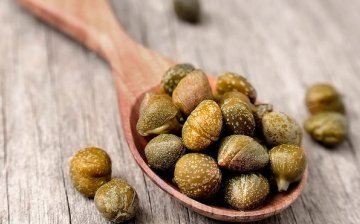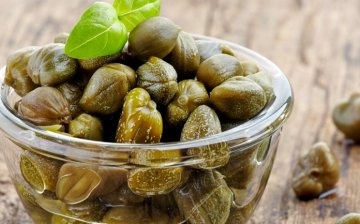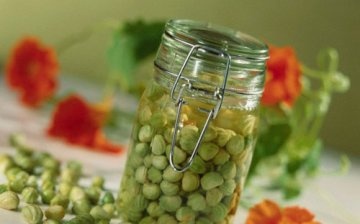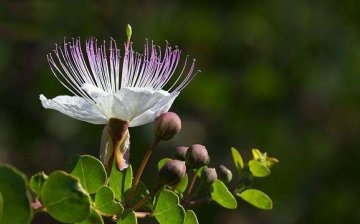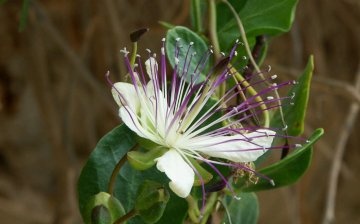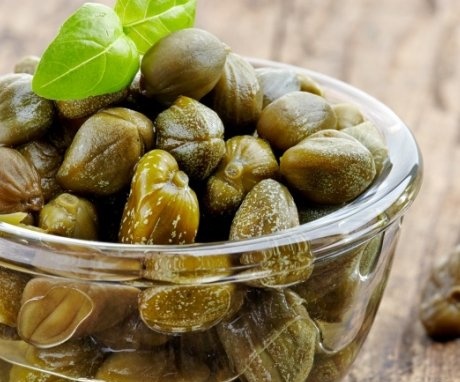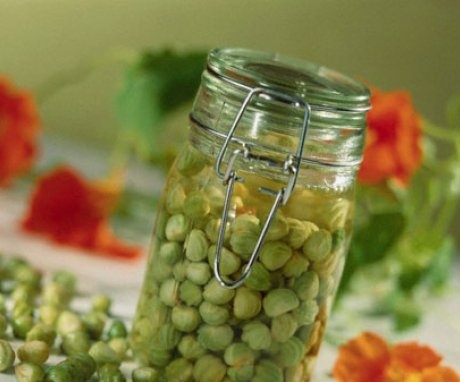What is Capers: the use of berries and the cultivation of a caper
Almost everyone has heard the word "capers", but not everyone understands what it is: a berry, fruit or vegetable. In fact, these are the unblown buds of an exotic plant called the caper, which are used both in cooking and in folk medicine. In Russia, the cultivation of a caper is still rare, since not everyone understands how to use this plant correctly.
Content:
- Description and properties of capers
- Application of capers
- Reproduction and cultivation from seeds
- Features of caper care
Description and properties of capers
As mentioned above, capers are unblown buds of a creeping plant. The caper is prickly bushthat grows in Africa, southern Europe. Its unblown buds look like small heads of Brussels sprouts. When the bud opens, it looks like a white flower with long stamens.
In the Caucasus, where this plant is grown en masse, it is also used as an ornamental shrub, since during flowering he is very handsome. Flowers can be not only white, but also pinkish and red (Iranian caper). In Russia, capers are becoming more and more popular, although still not everyone still knows what capers look like, what they are and how to use them. The popularity of capers has brought simplicity in cultivation. These shrubs are incredibly tenacious, they can grow and thrive on virtually bare rocks.
Kapernik has several varieties, varieties, but varieties with small buds are of the greatest value - the smaller the buds, the more they are appreciated.
Outwardly, the capernice looks like a creeping shrub, very short, with round green leaves and small white or pink flowers.
If we talk about the taste of capers, then this is something salty-tart, spicy, reminiscent of mustard. The caper bush can be used almost completely, since all of its parts have anti-inflammatory and strong analgesic effects. Even the ancient Greeks actively used the ground parts of this plant to treat flatulence.
The buds contain a large amount of fiber, protein and fat, but there are practically no carbohydrates and quite a few calories, which makes them dietary and beneficial for the digestive system. They also contain vitamin C, which gives them sourness, as well as vitamin A, magnesium, iron, calcium. Capers also contain a substance called rutin, which has the ability to normalize blood pressure. However, there is a lot of sodium in the buds, which tends to retain fluid and form edema. To reduce the sodium content of the buds, capers are soaked in water or olive oil.
Application of capers
There are many uses for capers and other parts of the caper bush. It can undoubtedly be grown as an ornamental plant, then you should not give up the opportunity to use all the beneficial properties of this shrub.
Most often it is used in cooking and traditional medicine:
- Capers can be used as a condiment. They are added to meat dishes, salads, side dishes.For this, pickled capers are more often used, which are put in a small amount in a dish. Their tart and salty taste will add spice to the dish. However, it is important not to overdo it, otherwise the taste of other foods will not be felt. By the way, capers were originally included in the original salad recipe, invented by Lucien Olivier, who is so loved in Russia.
- Capers can also be used as a side dish. To do this, they are thoroughly soaked to reduce the salt content. These side dishes are very useful, but may not suit everyone's taste.
- You can make a marinade from capers, which is added to meat and vegetables.
- A decoction of caper flowers can be used in different ways: as compresses to heal wounds, internally to strengthen the cardiovascular system, to improve appetite. To improve appetite, a decoction of capers or the buds themselves are consumed some time before meals.
- Also, a decoction of buds and leaves will help relieve pain: toothache or headache. To do this, they drink the broth or rinse their mouth with it, paying special attention to the side where the aching tooth is, you can make compresses.
- Capers also have a choleretic agent, they are good to eat for diseases of the liver, gallbladder. In this case, a decoction of the roots of the caper bush will also be useful.
- Capers have a beneficial effect on bowel function. They have long been treated with increased gas production, flatulence. However, people with chronic constipation should be careful.
- For a long time, goiter was treated with capers. Now these buds are also recommended for people with thyroid problems, since they contain a fairly large amount of iodine.
Growing from seeds
Growing capers is possible even on sandy soils where nothing else grows. They perfectly tolerate even severe drought, but can die if watering is overused.
It is not difficult to grow them, but the shrub grows rather slowly.
For the first couple of years, it can be grown as a houseplant, since it remains small, and then planted in open ground. It is better to grow caper shrubs in sunny places, not located close to groundwater. This plant has a very powerful root system, therefore, it is able to extract moisture and nutrients for itself, even in very arid places and infertile soils.
Since the shrub grows slowly, the first crop of capers can only be harvested in the second year of cultivation. The first year will only have abundant foliage.
Planting tips:
- Before planting capers, you need to process the seeds and remove the protective film from them. The fact is that the seeds do not fall into a dormant state, they are always ready for sowing, but in order to avoid premature germination, they are protected by a special shell. To remove this waterproof shell, the seeds are ground with river sand. Despite the plant's love for dry climates, seeds need to be germinated in moist soil.
- Planting caper seeds is done immediately in open ground, but you can first grow seedlings in a greenhouse, if the weather does not yet allow planting seeds in the ground.
- You can plant seeds in the spring, in any month, from March to May, depending on the weather in the region.
- Before planting seeds, the soil does not need to be watered abundantly, but you can fertilize... It is important to leave enough space between them, as the shrub grows over time. It can be grown in the same place for over 10 years.
Capers usually propagate by seeds. To do this, you need to let the buds open, and the fruits to ripen. But since the buds on the caper bush do not appear immediately, you can propagate it by layering. If you plan to plant seeds immediately in open ground, you need to prepare it in the fall. Dig up thoroughly and deposit mineral fertilizers.
Features of caper care
The caper is completely unpretentious in care.No complex manipulations need to be carried out, but there are some rules that will allow you to achieve faster growth and a rich harvest:
- This plant loves bright light, so a place for landing you need to choose the sunniest. It does not turn yellow and does not dry out even in the midday sun. But it is desirable that this place be protected from the wind.
- If the cultivation of the caper takes place at home, it is worth remembering that it will still have to be planted in open ground. After 2-3 years, the roots of the bush will begin to grow. They can reach a length of 15 m, that is, it will not always work to grow a caper in an apartment, it will die.
- If the shrub has been growing for more than a year, the buds will begin to appear in June. They can be harvested until September, but be sure to dry them before storage.
- You can not often water the caper. At the same time, his roots begin to suffer from a lack of oxygen, which can lead to the death of the plant. Also, high humidity leads to various fungal diseases... If the caper grows at home, the room should be regularly ventilated.
- In May and July, you need to spend feeding... It is also important to regularly remove all weeds and loosen the soil, especially before watering. The crust on the soil surface does not allow air to flow to the root system.
- Unfortunately, the caper is often affected by various pests, such as slugs or aphids. If they appear, the plant must be thoroughly rinsed with a jet of water to remove the pests. After that, the leaves are wiped with soapy water, and the whole plant is processed fungicide... This procedure must be carried out until the pests completely disappear.
It is quite simple to grow a caper in your area. It will delight the gardener not only with its beautiful appearance, but will also bring tangible benefits. Its roots, leaves, buds and fruits can be used both for medicinal purposes and for preparing various dishes.
More information can be found in the video.



